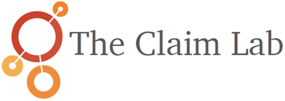August 2019 – “Stay At Work!”
We have been very vocal about the importance of getting better data to drive claims management. From the analytical view, we have to find richer sources of data to drive our models. This enables us to help you make better claim duration projections and calculate more accurate reserves. However, what about getting this data earlier in the process?

Why wait until the claim form arrives!
Let’s look at pre-absence, going back to before a disability claim is filed, even before the individual reports sick.
As well as trying to find more effective techniques to help with “Return to Work” why not also focus on “Stay at Work”.
Those same factors that we have been working to obtain data for return to work, will also influence an individual’s capacity to stay at work. Those psychosocial factors that influence the length of a disability claim will also influence an individual’s ability to stick at work.
We have a reliable measure of mental health for a claimant, so we could use that measure for the mental health of the workforce. We know the factors that influence motivation to return to work, so is the motivation to stay at work not the same thing?
How could this process work…?
There is no claim at this point so the insurer would need to work with the employer to facilitate the process, perhaps by providing a set of tools to help them understand their workforce better, to support a wellness program if you like!
At regular intervals, data could be collected from employees measuring their state of wellbeing, rather like an employee survey, in the form of a questionnaire sent to all employees. The questions would be tuned so employees felt comfortable disclosing the information. These would be focused around the topics that we know drive duration on a disability claim. We would collect the information, analyze and produce a risk profile.
How do we change the outcome…?
Once we identify the groups at risk, we can then work with the employer to mitigate the risk. Use interventions to help with depression or anxiety issues. Arrange accommodations for those struggling with physical limitations, before they need to be off work. Identify simmering workplace issues and take corrective action.
How do we measure success…?
Of course we may manage some issues which would never have resulted in a claim, as some individuals will just struggle on at work. However, the effect of that person’s reduction in productivity will be a real cost to the organization, never mind the cost if they do actually become absent from work, and move from a struggling employee to a claimant.
To make this work we need to cross familiar boundaries and change the traditional way of working. The cost justification is not hard, helping employees before they become costly claims will improve claim experience, improve attendance and reduce staffing cost. Let’s gather the right data to help individuals stay productive!
Thank you
Ian Bridgman
